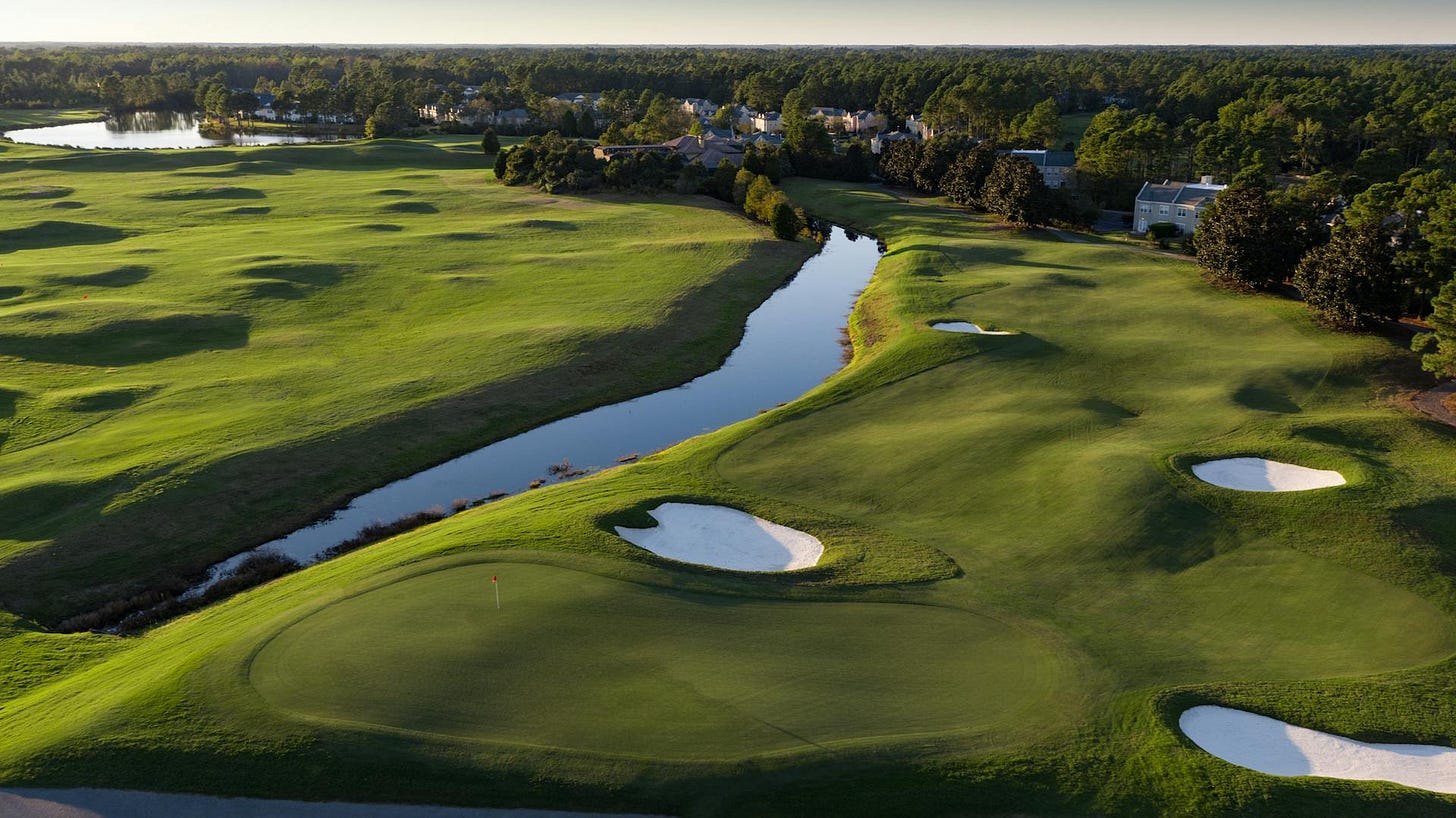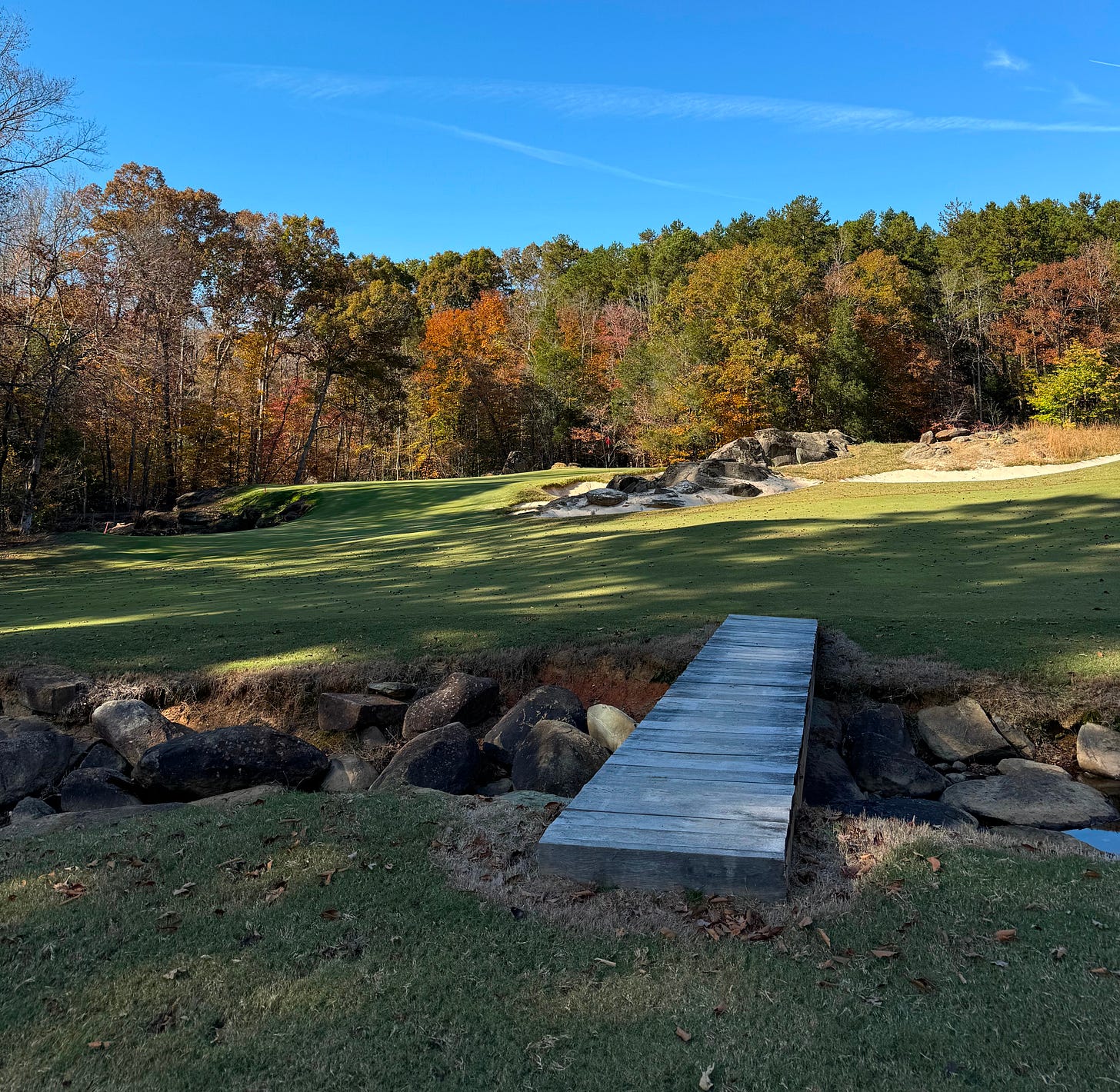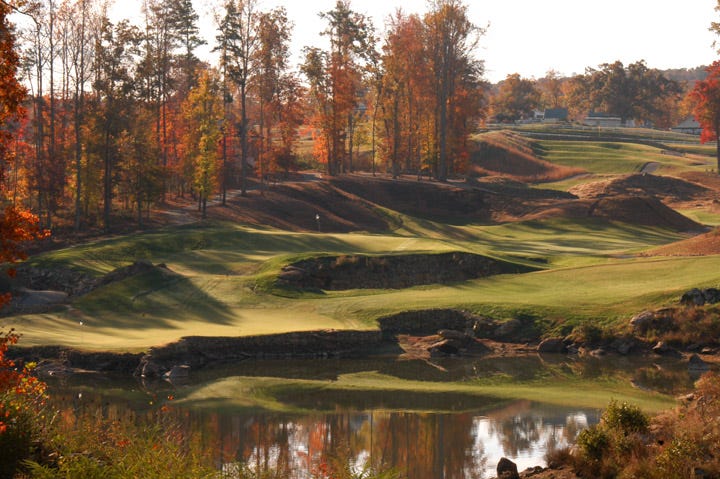Mike Strantz Legacy Restored as Tot Hill Farm Enters Top 100 Golf Course Rankings
Considered a maverick ahead of his time, Mike Strantz designed some of the most interesting and visually stimulating golf courses in the world, and many are currently being restored and renovated.
Strantz’s passing at age 50, coupled with his late start in independent golf course design, left him only 15 years to accumulate a body of work. His seven courses are still regarded as some of the greatest golf experiments to date. However, there are more than just seven.
Strantz began his career under the tutelage of famed golf architect Tom Fazio. The two met shortly after Strantz graduated from Michigan State University with a degree in Turf Grass Management. Strantz was working at Inverness Club in Toledo, OH, while Fazio was on site preparing for the 1979 US Open. Strantz worked on Fazio’s crew until the restoration of Wild Dunes in Isle of Palms, SC.
Originally on site at Wild Dunes for the construction of the courses in 1979 and 1984, Strantz returned after Hurricane Hugo to restore the facilities, unaccompanied by Fazio. Shortly thereafter, in 1992, Strantz was recruited by Legends Golf Group in Myrtle Beach and tasked with creating the Parkland Course. The course’s origins remain ambiguous, as the website makes no mention of Strantz, and the facility credits the owner at the time, Larry Young, for its design.

Strantz stayed in the Myrtle Beach area, reworking the greens at another Legends property called Heritage Club before completing his first universally acknowledged solo design, Caledonia Golf and Fish Club, located next door to Heritage. Caledonia mimics the design of Parkland—a South Carolina version of Riviera mixed with Augusta, minus the hills. Traditional white sand bunkers and challenging tee shots through a mesh of trees, with classically placed water hazards adjacent to the tees or greens, make Strantz's first two designs his most subdued.
Things would change dramatically.
Stonehouse incorporated white sand and oval-shaped bunkers, featuring dramatic elevation changes and intense green slopes. Fairways began to widen, while the greens morphed and shrank. Royal New Kent was a game-changer: a golf course with wide fairways that squeeze into narrow pinch points, surrounded by bunkers that guard common misses, and featuring cape-style holes. The use of natural contours forces players to work the ball away from the most advantageous lines, requiring bravery to challenge the best landing areas.

His next creation would be his first maximalist design. Right across the street from his mild-mannered Caledonia, Strantz created True Blue. Wide fairways slope toward hazards and waste areas; greens have multiple tiers, and bunkers are numerous, deep, and penal. Unlike his earlier work, True Blue incorporates a lot of water, waste bunkering, and multiple forced carries, featuring a variety of hazards on every hole. The name True Blue comes not from the water hazards surrounding its fairways and greens but from the indigo that was farmed on the property—a necessary component for blue dyes. Hole 18 is a dramatic finishing hole, with a forced carry to a slightly obstructed fairway, flanked by water on the entire left side. It widens slightly for those who hit driver off the tee. The approach to a diagonal green requires another shot over the water. If the water carries don’t strike fear into a player, the large covered deck at the rear of the clubhouse certainly will. More than two groups usually frequent the deck to sip post-round cocktails and watch the next group of challengers tackle the 18th hole. From the fairway, you can hear bets being made and see money change hands as patrons gamble on who will hit the green and who will find a watery grave.

Strantz’s next two creations are his most intense. Tobacco Road in Sanford, NC, and Tot Hill Farm in Asheboro, NC, combine golf, deception, illusion, and art. After years on the road establishing himself under Tom Fazio, Strantz opened his own design firm, vowing to keep travel away from home and his wife, Heidi, and their two daughters to a minimum. With a home base in Charleston, much of Strantz’s work resides in the Carolinas. Tobacco Road and Tot Hill Farm sit just over an hour apart from each other and share a similar intensity.
Tobacco Road has long been touted as Strantz’s best work. The site of a former sand mine, the elevation and red/orange sand dune landscapes create a stunning contrast with the green fairways and greens. The clubhouse sits atop the property at a relatively high point, with holes cascading into the former quarry site surrounding it. While the elevation changes are not particularly great, the use of large mounds and hills throughout the holes adds reveals and crevasses, providing artificial interest.
Tobacco’s artificial land movement is not a drawback. Strantz’s manufactured work fits perfectly within the remnants of land previously excavated by a sand and stone quarry company. In keeping with tradition, Strantz moved less earth than one might expect to create this masterpiece.
Tot Hill Farm represents Strantz’s crescendo of creativity. Situated on a dynamic piece of unused land, this was his first test with large elevation changes on a blank canvas. Previous projects featured portions of land that had been cleared or where existing golf courses were relatively flat and easily traversed. Tot Hill was different.
Enter a horse named Scout.
Long before topographical laser assessments, architects had to roam the land to visualize the aerial photography of the proposed course. The terrain at what would become Tot Hill Farm was so severe that traversing it as a human would be exhausting. To adequately survey the grounds, Strantz is rumored to have bought a small horse (smaller than what would typically be effective for horse work) to help navigate the course. This rumor is likely fact, as the local beer is named Little Man Lager.

“During construction of Tot Hill Farm Golf Club, Mike Strantz and his right-hand man, Forrest Fezler, searched for horses to navigate the incredible terrain. After finding a horse for Forrest, they noticed a little guy grazing in the pasture. One look and they knew they had found the club's new mascot. As the club’s official ambassador, Little Man enjoyed a great life along what would become the 9th fairway at Tot Hill Farm. To celebrate our mascot, we partnered with Four Saints Brewery in Asheboro to craft a beer that would honor Little Man and his contribution to the club's history,” as noted in the club’s history.
The holes bring the dynamic land to life. The rocks that dot the landscape now surround the landing areas of the fairways and approaches to the greens. Rocky outcroppings line the ponds and creeks, providing strong and intimidating visuals. The slopes and elevation changes add to the intensity.
The course doesn’t soften on the putting surface. Most greens have multiple tiers, false fronts, harsh slopes, and surrounding collection basins. Half of the greens are tucked just past a border with a hazard, while the others are guarded by slopes. Not a single green sits on flat, safe, unguarded land.

A flood destroyed multiple greens in 2003-04. A management company hired to run the course abandoned it in the middle of the night, leaving the original owners to pick up the pieces. The course continued to deteriorate over the years. Many feared closure was imminent in January 2022 after a fire destroyed the maintenance barn, taking much of the necessary equipment needed to maintain the course.
The sale of the golf course from the Young family in 2023 may have been the saving grace for the property, providing the needed investment in the turf. The rare use of Zoysia grass on the greens, after one year of growth, appears to be a wise decision, as all putting surfaces, regardless of tree cover, have prospered and are rolling very true.
Typically, a property with such intense slopes leads to significant water pooling and drainage issues, directly impacting grass growth in low points. However, at Tot Hill, these areas where water should pool still boast dense grass growth. Like many of Strantz’s courses, the only drawback to course conditioning is a few collection points where a missed shot is likely to end up.

Hole three is a Mike Strantz template special: a medium-length downhill par three requiring a carry over a small creek that crowds front pin placements. The green, a template, features a severely sloping surface from back to front and right to left, often described as a reverse Redan.
Other holes are so obscure they follow no known template. The green at the fifth hole is shaped like a T, with a narrow entry that widens in the rear and offers three to four pin-able locations—something rarely seen in the world of golf.
The back nine features one of the most picturesque inland par fours. The twelfth hole presents a risk-reward drive, with a water hazard inches from the end of the fairway on the left. A drive up the center or to the right is safe but leaves a longer approach to a green guarded by a rocky cliff face and water to the front left and back. It is a truly unique golf hole on an incredible piece of land.

The restoration work done at Tot Hill Farm was so significant that it immediately moved the course back into the public golf top 100 list, solidifying its status as a best place to play in one of America’s most densely packed golf regions. The hour-and-45-minute drive from Raleigh is well worth the commitment to experience this national treasure.



